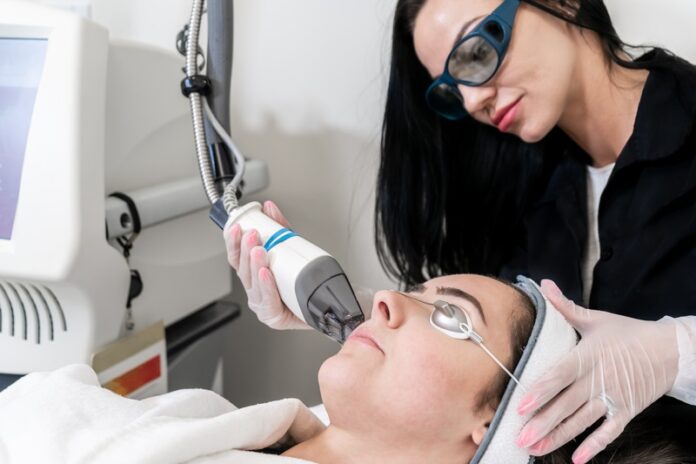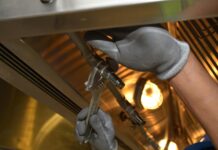
Med spas operate at the intersection of healthcare and aesthetics, offering services that go beyond traditional spa treatments. As these establishments provide medically supervised services, the importance of legal compliance cannot be overstated. Medical spa legal compliance ensures the safety and well-being of clients, protecting both the consumer and the provider. Adhering to these regulations not only helps in maintaining the credibility of the med spa but also shields it from potential legal issues.
Understanding Med Spa Compliance Regulations
Regulatory Bodies and Their Roles
In the United States, medical spas are regulated by a combination of state and federal agencies. The specific regulatory requirements med spas must adhere to can vary significantly from one state to another. State medical boards oversee the practice of medicine within med spas, while other agencies may focus on issues related to consumer protection, drug use, and the use of medical devices. Understanding the role of each regulatory body is crucial for ensuring that a med spa operates legally and ethically.
Common Compliance Requirements
Med spa regulatory guidelines typically cover a range of practices, including the licensing of practitioners, the types of treatments that can be offered, and how those treatments are to be administered. Compliance involves adhering to standards for cleanliness, equipment maintenance, and the handling of medical waste, among other things. Med spas must also ensure that all medical procedures are performed by qualified staff, further emphasizing the need for strict adherence to these regulations.
Impact of Non-Compliance
The consequences of failing to comply with med spa legal obligations can be severe. Non-compliance can result in penalties such as fines, the suspension of licenses, or even the closure of the business. Additionally, legal actions can be brought against the med spa by clients who suffer harm as a result of negligence or malpractice.
Importance of Staying Updated
Laws and regulations governing med spas can change frequently, making it essential for operators to stay informed about current med spa compliance regulations. Regular training sessions for staff, attending industry conferences, and subscribing to regulatory updates are effective ways to keep up-to-date on changes.
Good Faith Exam Compliance Guide
General Legal Framework
The legal framework for med spas contains a variety of laws and regulations designed to ensure the safety and efficacy of treatments offered in these settings. The cornerstone of this framework is the requirement for med spa good faith exams, which mandates that a qualified healthcare professional assesses a patient before any medical procedures are performed. This assessment is crucial for determining the appropriateness of the proposed treatments based on the patient’s medical history and current health status.
Differences Between In-Person and Telehealth GFEs
With the rise of telehealth, differences in how good faith exams in medical spas are conducted have become more pronounced. In-person exams typically allow for a more comprehensive health assessment due to the physical presence of the patient. However, telehealth provides a convenient alternative for follow-ups and minor consultations. Regulations may differ for telehealth in terms of the technology used, the documentation required, and the way patient information is secured during digital transmission.
Conducting a Legally Compliant Good Faith Exam
Step-by-Step GFE Process
To ensure that Good Faith Exams in medical spas are conducted in a legally compliant manner, it is essential to follow a structured process. Here’s a detailed guide:
- Verification of Patient Identity: Confirm the identity of the patient using at least two identifiers (e.g., name and date of birth) to avoid any mix-ups.
- Review of Medical History: Gather comprehensive information about the patient’s past medical history, including any previous surgeries, ongoing treatments, and medication usage.
- Assessment of Current Health Status: Evaluate the patient’s current health through questions about symptoms, lifestyle, and any recent changes in health.
- Discussion of Treatment Options: Discuss potential treatment options with the patient, highlighting the benefits, risks, and alternatives.
- Informed Consent: Ensure that the patient understands all aspects of the proposed treatments and obtains their written consent.
This comprehensive process not only adheres to good faith exam standards but also builds a foundation of trust and safety between the patient and the provider.
Physical Examination Protocols
The physical examination is a key component of the GFE and should be conducted according to standardized protocols. This examination should be thorough and specific to the treatment plan being considered. It might include dermatological assessments, measurements, and sometimes diagnostic tests to gather necessary health data that will inform the treatment process.
Documentation and Record-Keeping Requirements
The Importance
Thorough documentation in medical spas is not merely a bureaucratic requirement but a critical component of patient care and legal compliance. These records serve multiple purposes:
- Legal Protection: Documentation acts as a legal shield in cases of disputes or litigation, providing evidence of the care provided and the decision-making process.
- Continuity of Care: Detailed records help maintain continuity of care when multiple practitioners are involved or when the patient returns for follow-up treatments.
- Regulatory Compliance: Maintaining records by med spa regulatory guidelines ensures that the spa meets all legal obligations and is prepared for any audits or inspections.
- Quality Assurance: Reviewing and analyzing these records can help in identifying patterns that might indicate areas for improvement in both clinical outcomes and patient satisfaction.
In-depth and methodical documentation is a cornerstone of risk management and quality control in any medical setting, making it indispensable for med spas aiming to uphold high standards of care and compliance.
Electronic Health Records (EHR)
The adoption of Electronic Health Records (EHR) in medical spas has revolutionized how documentation is managed. EHR systems facilitate more efficient record-keeping, better security measures, and easier access to patient histories. For compliance, these systems must be configured to meet specific good faith exam policies, such as secure encryption of data and audit trails that track access and changes to the records.
Periodic Re-Evaluations and Follow-Ups
When and Why Re-Evaluations Are Necessary
These assessments allow practitioners to monitor progress, adjust treatment plans as needed, and respond to any changes in a patient’s health status. Regular re-evaluations are particularly important for long-term treatment strategies that involve multiple sessions, such as laser treatments or injectables, where the impact of treatments can evolve. This process helps in maintaining the efficacy of the treatments while adhering to good faith exam laws.
Legal Implications of Inadequate Follow-Ups
Inadequate follow-ups can have significant legal implications for med spas. If a patient suffers harm due to a lack of proper monitoring after a procedure, the facility and the practitioners may face legal action for negligence. These protocols should be designed to flag any deviations from expected outcomes promptly, allowing for timely interventions that can prevent complications.
Practitioner Qualifications and Responsibilities
Licensing and Credentialing Requirements
All practitioners must meet stringent licensing and credentialing requirements. These standards are set to ensure that those performing medical procedures are adequately trained and legally authorized to do so. The specific licenses required can vary by the type of treatment offered and by state but typically include medical doctors, nurse practitioners, or licensed aestheticians. Credentialing not only verifies the practitioner’s qualifications but also reassures patients of the quality and safety of the care they receive.
Training and Continued Education
Practitioners need to stay updated with the latest advancements in techniques, products, and good faith exam guidelines. Continuing education with exams in medical spas not only enhances the skill set of the practitioners but also ensures that the med spa remains compliant with the latest regulatory requirements med spas must adhere to. Training can include seminars, workshops, or more formal continuing medical education (CME) courses designed to keep practitioners at the forefront of the industry.
Best practices in medical spas go beyond mere compliance. They involve a commitment to excellence in patient care, ethical practices, and continual improvement. Encouraging these practices fosters a culture of professionalism and trust, which are crucial for the long-term success of any medical spa. Implementing rigorous standards for treatments, patient interactions, and business operations can set a med spa apart in a competitive market.
Find a Home-Based Business to Start-Up >>> Hundreds of Business Listings.















































